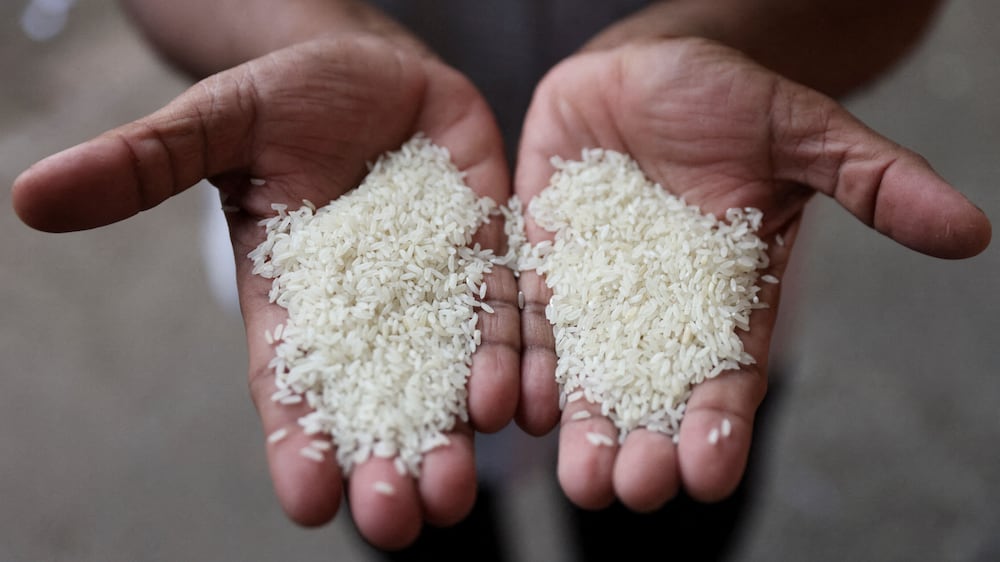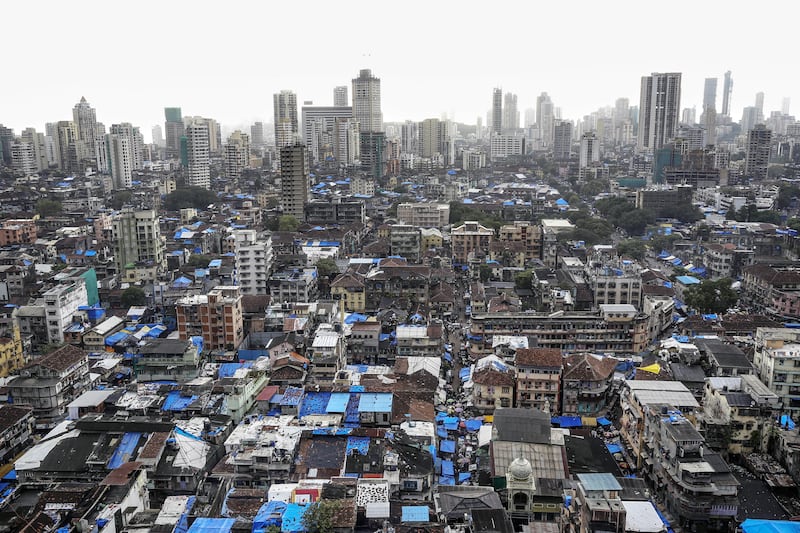India's economy has been making headlines for its impressive growth numbers which defy global challenges. However, analysts say that these figures mask economic weaknesses.
Economists say the country is also dealing with problems such as a crumbling rural economy, weak infrastructure and a low-skills workforce.
India's gross domestic product grew at a faster-than-expected rate of 8.4 per cent in the quarter to the end of December, with an official prediction of 7.6 per cent growth in the current fiscal year, which runs until the end of March.
India's growth may appear to be a “bright spot in a gloomy world outlook … but this does not reflect the reality on the ground”, says Sharad Shukla, director at Mehta Equities, based in Mumbai.
He quotes examples including the slow growth in sales of fast-moving consumer goods in rural areas and weak sales of small cars as indicators that the headline numbers for the country's GDP growth do not necessarily tell the full story.
Sales of entry-level cars plummeted 75 per cent to 35,000 vehicles in the three months to the end of September compared to a year earlier, the Society of Indian Automobile Manufacturers said.
On Tuesday, former Indian central bank governor Raghuram Rajan warned that the country should not get sucked in by the “hype” around its strong economic growth.
This comes as India prepares for its general election in a matter of weeks, with boosting economic prosperity being central to Prime Minister Narendra Modi's campaign, as he is widely expected to win a third term.
Mr Rajan, however, told Bloomberg that improving education, skills, and creating jobs were the need of the hour for India.
Despite India's high GDP growth, official data shows that private consumption, which is a major driver of the economy was only up by 3.5 per cent in the last three months of the year.
Analysts say the GDP numbers appear to be misleading.
“On the surface, the robust GDP growth seems contradictory given the modest increase in private consumption and contrarian trends in government spending,” says Tanvi Kanchan, head of UAE business and strategy at Anand Rathi Shares and Stock Brokers.
“Such discrepancies in India’s economic data are not unprecedented and are often attributed to large downward revisions of past data that boost recent growth rates.”
While she argues that in general, India's economy is performing well, there are regions that are struggling.
“India’s economy, along with corporate earnings, has consistently outperformed expectations,” she says. “Robust investment activity signals business confidence, while resilience across industrial sectors, notably manufacturing and construction, and a surge in service activity” are all positive indicators, says Ms Kanchan.
However, “agriculture, coupled with low growth in private consumption signals potential vulnerabilities that definitely warrant attention."
The agriculture sector contracted by 0.8 per cent in the quarter to the end of December compared to a year earlier, India's official data reveals.
The farming industry is the country's largest employer and most of the population lives in rural areas – so if agriculture is not doing well, this has a knock-on effect on areas including consumer spending.
“India is significantly lagging behind in agricultural productivity,” says Mr Shukla.
The disconnection when it comes to India's growth figures and the reality is partly a result of the way the GDP data is calculated, including using India's wholesale price inflation index data, rather than retail inflation figures, he says.
Some economists say that India's latest GDP data is somewhat skewed because of a surge in the growth of net indirect taxes.
They say that the GVA (gross value added) figure for the quarter to December, which came in at 6.5 per cent and does not include those taxes, is perhaps a more accurate representation of the country's economic expansion.
The difference between India's GDP and GVA growth in the latest quarterly data “is difficult to fathom”, says Madhavi Arora, lead economist at Emkay Global Financial Services.
“It largely reflects higher growth in general government net indirect taxes, possibly with lower subsidies,” she says.
Neither of these numbers, however, gives an insight into issues including India's creaking infrastructure, which Mr Shukla says is holding the country back from achieving its economic potential.
“To attain the full economic potential India has to invest in infrastructure development,” says Mr Shukla.
“The logistic cost for the Indian exporter is significantly higher than the other competing exporting countries. Labour, judicial, and bureaucratic reforms are the need of the hour. The government has to also invest significant amounts of money in modernisation of the education system and improve the medical infrastructure.”
In an interview with Bloomberg Television last week, Morgan Stanley’s chief Asia economist Chetan Ahya said that he did not see India hitting the 8 to 10 per cent economic growth rates that China achieved, because of a lack of infrastructure and low-skilled workforce.
This is how farmers in India are growing rice sustainably

He says that India's long-term growth is likely to come in at around 6.5 per cent to 7 per cent a year.
Overall, financial institutions remain generally bullish on the outlook for India's economy – at least on paper.
They have been upgrading their economic growth forecasts following India's better-than-expected figures for the current year.
Ratings agency S&P on Tuesday lifted India's growth forecast for the financial year to the end of March 2025 by 40 basis points to 6.8 per cent.
Breaking this down by sector, analysts note that there will inevitably be variations in the performances of different industries.
“We are bullish on sectors such as automobiles, information technology, pharmaceuticals, non-banking financial companies, and cement, based on their growth potential, sectoral dynamics, and regulatory environment,” says Ms Kanchan.
These sectors will benefit from macroeconomic trends, technological advancements, and domestic demand patterns, she says.
“Conversely, a more cautious stance on capital goods, engineering, infrastructure, and realty sectors. These areas face headwinds from regulatory challenges, cyclical demand fluctuations, and investment cycles.”
But the bigger concern is addressing the underlying challenges that continue to plague India's economy despite the strong growth prints.
“Navigating these economic complexities demands a deeper analysis beyond surface-level data,” says Ms Kanchan.
“While this period of robust growth presents opportunities, strategic foresight is crucial to ensure sustainable development and equitable prosperity in the long term.”





